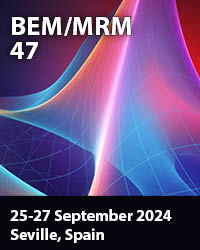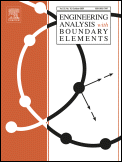3667.jpg&container=blogger&gadget=a&rewriteMime=image%2F*) |
| Bram Schoonjans |
The Jury consisted of the following members:The topic of research was “Modelling high-voltage inductive interference using boundary elements in infinite regions”.
- Prof L Van Biesen (President) Free University of Brussels
- Prof R Pintelon (Vice President) Free University of Brussels
- Prof P Lataire (Secretary) Free University of Brussels
- Prof C A Brebbia, Wessex Institute of Technology, UK
- Prof G De Mey, University of Ghent, Belgium
- Prof V Topa, Technical University of Cluj-Napoca, Romania
- Prof J Deconinck (Supervisor) Free University of Brussels
During the submission, Mr Schoonjans explained the motivation for his work, ie in order to transport oil and natural gas under high pressure, a vast network of steel-buried pipelines is used, which can cover hundreds or even thousands of kilometres in range. Beside the transport of these resources, there is also the need to transit electrical power at high voltage over the same distances. Due to the scarcity of land in the developed world, the tendency is to allocate these pipelines and electric power transmission systems in the same so-called “utility corridors”.
As a consequence, metallic pipelines will run parallel to high voltage power lines along those corridors. Therefore, since the current flowing through the transmission lines produces a magnetic field, this will inevitably induce a voltage on the buried metallic conductors. Serious dangerous situations can arise, such as electrocution, hazards and accelerated corrosion.
In order to mitigate these potentially dangerous situations, it is indispensable to have an independent knowledge of how they occur.
Since the download interface is dependent upon a multitude of parameters, any purely analytical solution can be excluded. It is necessary to model the problem in terms of numerical models. In the thesis, the electromagnetic field problem is simulated using a finite element solution for the conductors and boundary elements for the unbounded soil domain.
The thesis presented a new way to deal with the infinite domain, ie an innovative general method of how to handle the unbounded domain case when using boundary elements.
The excellent presentation and defence of the thesis resulted in the Jury awarding Mr Bram Schoonjans the PhD with the highest possible qualification.




